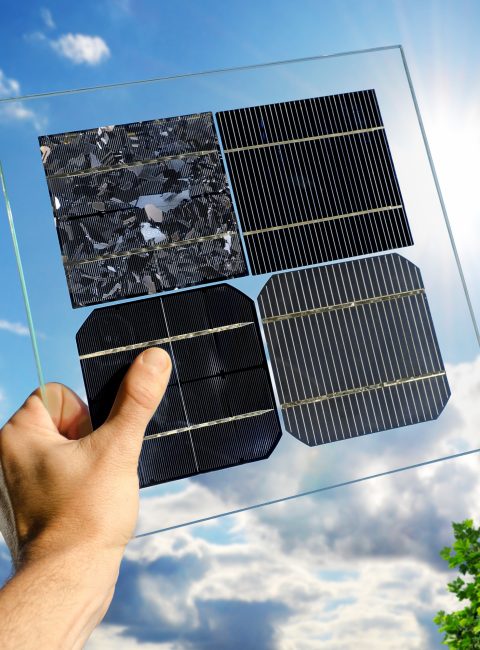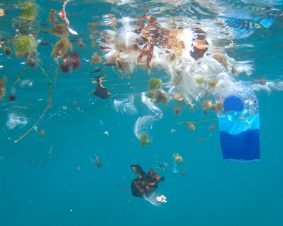 >
Spotlight March 2023: How can photovoltaics be made safe and sustainable?
>
Spotlight March 2023: How can photovoltaics be made safe and sustainable?
Conventional photovoltaic systems often have only low efficiency, i.e. only a fraction of the solar energy is converted into electrical energy and made usable. For this reason, research is being conducted into innovative materials that can significantly increase the energy yield and thus also enable more electrical energy to be generated from renewable sources. However, most of these materials contain toxic heavy metals, such as lead perovskite materials (material text perovskites) or lead quantum dots.
The review article addresses the question of how these novel photovoltaic materials can be made more sustainable in the future (basic text sustainability). For this purpose, in addition to the release scenarios of lead from solar cells due to environmental influences, their toxicity for humans and the environment is also considered, and avoidance strategies are shown that can effectively prevent the release of lead. These consist, for example, of reducing the lead content in photovoltaic modules or replacing lead with other, less critical elements (e.g. tin). There is also the possibility of coating solar cells or encapsulating the lead-containing components and thus protecting them from the effects of wind, rain and heat. Additives can also be used for stabilization (e.g. fullerenes). This can effectively prevent the release of lead into the environment.
Finally, recycling processes are summarized that allow the lead to be recovered and reused in new products. These processes can have tremendous environmental and economic benefits, as the release of lead into the environment from waste is prevented, and the reuse of the lead for new products is sustainable in the circular economy sense. It is clear at this point that many of the recycling processes presented rely on the use of large amounts of various solvents, which is also critical. The authors state that more research is needed for effective and sustainable recycling and suggest that recycling costs should be included for an economic consideration of lead-containing solar materials.
This article provides a comprehensive review of how higher efficiency ,but with critical heavy metals, solar materials needed for the energy transition could be made more sustainable, and the authors outline future research is needed on these materials, which are still in development.
Original-Publication:
Xingwen Lu, Dong Yan, Jiangtao Feng, Meng Li, Bo Hou, Zhe Li, Fei Wang
Ecotoxicity and Sustainability of Emerging Pb-Based Photovoltaics. Sol. RRL 2022, 6, 2200699

Weitere Spotlights
Spotlight October 2020: Nanosafety – Topic of the Future
Research on nanosafety is a driver of innovation as the spotlight in July has demonstrated. But furthermore, this research field is built on routine as well if researchers look for the “needle in the haystack”. In many areas the safety research initiates the development of new methods, e.g. for the determination of nanoparticles within exposed organisms via […]
Read moreSpotlight December 2022: Fighting tumors with micro robots
When we, the DaNa team as operators of the website nanopartikel.info, write about nanobots, i.e. nanometre-sized machines, we point out that these machines belong to science fiction, may even remain a utopia – i.e. never realisable. On the significantly larger micro-scale, however, small machines are conceivable that could help in the therapy of diseases, e.g. […]
Read moreSpotlight July: Plastic Pollution and the Urgent Need for Comprehensive Action
Plastic pollution has become a significant threat to the oceans, biodiversity, and ecosystems worldwide. Despite efforts to reduce plastic consumption, escalating plastic production continues to increase the magnitude of plastic pollution in the environment. In response to this crisis, the UN-Environmental Assembly (Link) adopted a resolution in March 2022 to develop a legally binding treaty […]
Read moreSpotlight November 2020: Nanotechnology in the public perception
In November, we would like to draw your attention to a publication that examines public perception of the safety of nanomaterials in Austria.It shows, that although there is generally a rather positive attitude towards nanomaterials, there are different opinions on safety issues from different social groups. Further clarification seems necessary. Despite the widespread use of […]
Read more


